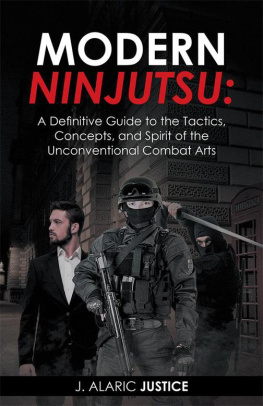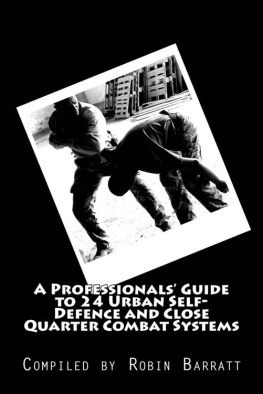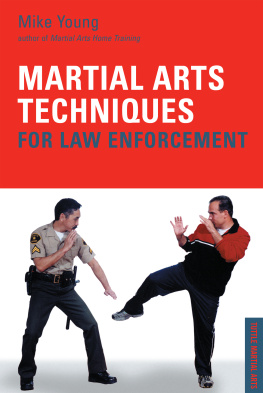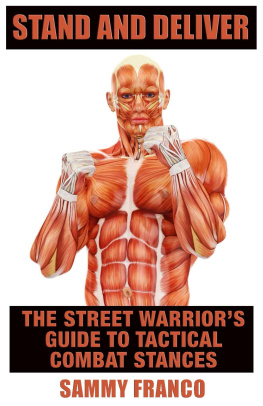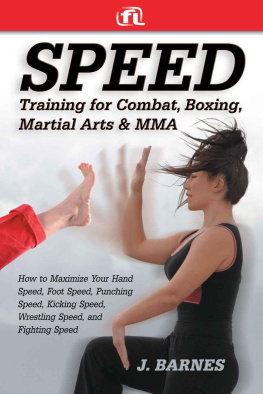MODERN
NINJUTSU:
A Definitive Guide to the Tactics,
Concepts, and Spirit of the
Unconventional Combat Arts
J. ALARIC JUSTICE

Copyright 2016 John Carlos Johnson.
All rights reserved. No part of this book may be used or reproduced by any means, graphic, electronic, or mechanical, including photocopying, recording, taping or by any information storage retrieval system without the written permission of the author except in the case of brief quotations embodied in critical articles and reviews.
Balboa Press
A Division of Hay House
1663 Liberty Drive
Bloomington, IN 47403
www.balboapress.com
1 (877) 407-4847
Because of the dynamic nature of the Internet, any web addresses or links contained in this book may have changed since publication and may no longer be valid. The views expressed in this work are solely those of the author and do not necessarily reflect the views of the publisher, and the publisher hereby disclaims any responsibility for them.
The author of this book does not dispense medical advice or prescribe the use of any technique as a form of treatment for physical, emotional, or medical problems without the advice of a physician, either directly or indirectly. The intent of the author is only to offer information of a general nature to help you in your quest for emotional and spiritual well-being. In the event you use any of the information in this book for yourself, which is your constitutional right, the author and the publisher assume no responsibility for your actions.
Any people depicted in stock imagery provided by Thinkstock are models, and such images are being used for illustrative purposes only.
Certain stock imagery Thinkstock.
ISBN: 978-1-5043-4935-2 (sc)
ISBN: 978-1-5043-4936-9 (e)
Balboa Press rev. date: 07/12/2016
CONTENTS
AUTHORS PREFACE:
INTRODUCTION TO THE MILITANT MIND
I am not a ninja. Despite all the oaths and creeds and vows I have made in ninjutsu training over the last 30 years, I am not a ninja. Unfortunately, nor is anyone else that has written books on ninjutsu in recent decades.
No noble lord directs my actions through a jonin clan leader. No chunin group sub-commander has ever trained me for, nor sent me on, missions for my clan or village. I have performed military operations in the field (as well as street operations of a completely different nature), but I am not a genin field agent. Though I have trained people for decades now, including in military and police positions, I am not a chunin myself. That is important to understand.
I am a military veteran of 3 different active duty tours, as well as a former law enforcement crisis negotiator and defensive tactics instructor. That is the viewpoint from which this book was written, more so than any years of traditional training. I do have various ranks in the martial arts and combative systems, but they really have very little to do with the information presented here. For only in fully understanding the combat foundation of the martial arts can we best guide our practice and its development for real-world applications, whether your implementation is for self-defense in the streets or military operations across the globe.
As a veteran, particularly from a family of veterans, I have a different view of the martial arts especially of ninjutsu than normal civilian martial arts instructors might. My perspective is more tactical in nature, meaning that I focus more on how to achieve a goal in direct action. This book does not represent mere hypothesis or theory, as is so often presented in martial arts books. Nor is it overly concerned with history or tradition, since tactics are concerned with the threats of the day, not those from the past . Much of what is typical in martial arts books will not be found in the pages that follow.
Virtually everything I have written here is from direct experience, from real-world applications. That means Ive had the misfortune of knowing men to suffer serious injury or even death whether from opponent force in battle or from their own inability to deal with pressures at home for failing to apply some of the principles now offered here. With this in mind, you can expect a serious tone in my words, though I am normally a joking and jovial man. My experience and passion for these concepts will be quite clear as you read these pages.
This is not a how-to guide of any sort. It does not contain techniques, for it is wholly concerned with the tactics of ninjutsu, as well as the principles of human development required for achieving those tactics. Therefore, this book covers more information on training than it does on technical prowess. Far too many books have been written on techniques already, so there is no real need of another technique guide. As the current grandmaster of three different ninjutsu systems says, What is important is to throw away the technique You want to get rid of the technique, not to show the same thing
Again, my tone is somewhat severe here, since we are dealing with important issues. However, the tone of famous historic ninjutsu references like the Bansenshukai and the Shoninki are also serious in content and nature. In addition, coming from the streets and military, I speak from a common mans perspective, not that of some doctorate or professional. My highest education is that of a registered nurse, serving now as an Occupational Health Nurse and Regional Safety Manager. Therefore, I will not write or speak formally at all times; older English professors may call my manner of writing vulgar or common. Proper mindset, very important to those older ninjutsu references, is perhaps the most critical thing I can convey here.
With these things in mind, this book may be something new and different to martial arts circles, and is certainly needed for maintaining realism in modern practice. So many MA schools and teachers of today are preaching and touting reality-based martial arts, but then never consider what the real world may require. Many such people are focusing more on sport applications than even their own traditional methods, both of which are often contrary to what reality dictates. Therefore, we will also explain this idea of realism in order to progress in your understanding of a truly tactical or reality-based system.
Truly, I hope that you enjoy this work. More important, I want to hear back from readers, especially those with real experience in these matters, that they may share their views with me on each issue covered here. Only by sharing and communicating with open hearts and minds can we grow mentally and spiritually as people and communities.
J. Alaric Justice
NINJUTSU: HISTORIC ANALYSIS OF A CULTURE
Before we get too deeply engrossed in the topic of ninjutsu itself, we have to achieve a certain understanding of the Japanese culture and its development. Any truly great nation becomes such by adapting to the times, and few countries have more consistently done that than Japan. According to Toshio Kurodas The Discourse on the Land of the Kami, Japan has been officially referred to by various chroniclers since the 8 th century as The Land of the Gods. Even with this lofty sounding description, her people have never held themselves as being too great or too pure for learning from outsiders ways. It has almost always been receptive to trade and cultural exchange with other lands, both to its Eastern neighbors and to outside Western forces. This is one of the defining elements of Japanese culture, making it so rich and diverse, and so also lends itself to the evolution of ninjutsu.
When you look at the history of a people, and open your eyes to more than just the who and where and when of various events, you get a glimpse of the culture specific to the times in that study. It is an opportunity to observe the political and economic pressures that a people may have experienced, as well as how they responded. Therefore, one cannot simply read a single history book to obtain a clear idea of what transpired. You must look at a number of books from a variety of authors presenting a spectrum of different angles. However, this is where most martial arts books fall short, in failing to present critical information that show the motives and defining elements of ancient practitioners, and how their arts were shaped by forces at work in their specific times.
Next page
